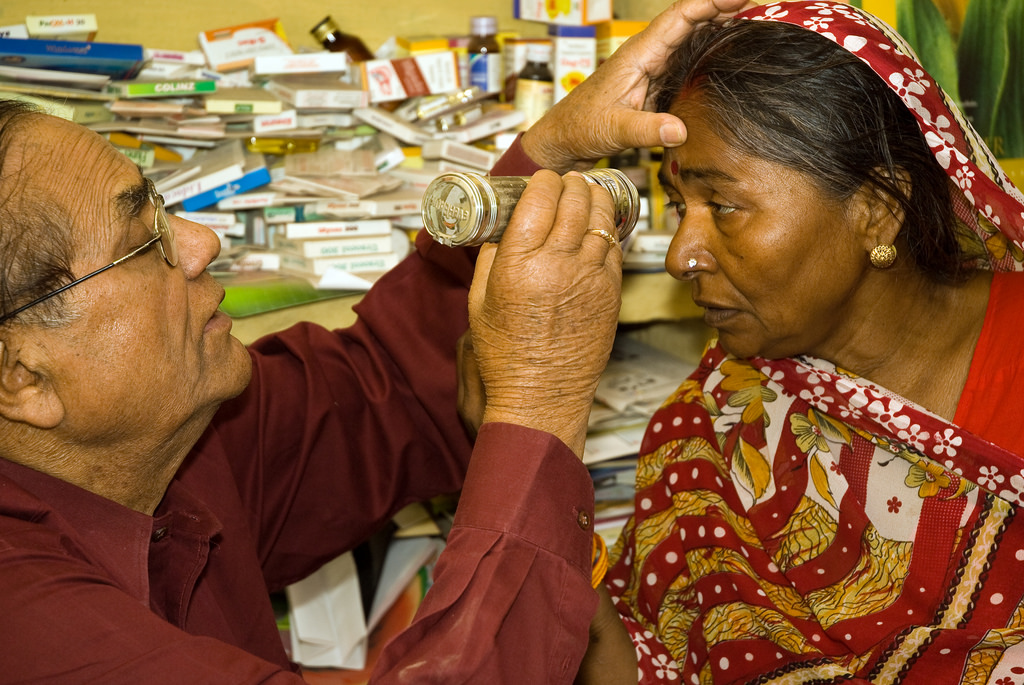A three-state study has found that India’s government-funded or private health insurance schemes that pay for hospitalisation have not adequately protected households from catastrophic health expenditures and rekindled the debate on how to achieve universal health care.
The study that examined sample households in Gujarat, Haryana and Uttar Pradesh found 28 per cent of insured households and 26 per cent of uninsured households faced catastrophic health expenditure that significantly altered their expenses on essential services.
“Health insurance in its present form does not seem to provide requisite improvement in access to (health) care or financial risk protection,” health economists who analysed health-care spending by 12,134 households in the three states said in their report.
Their findings, published this week in the journal PLOS One, echo long-standing concerns among sections of health experts that insurance schemes that only cover hospitalisation costs continue to expose households to significant financial risk.
The Narendra Modi government had last year launched the Ayushman Bharat Pradhan Mantri Jan Arogya Yojana (PM-JAY) for 10 crore poor households — or 40 per cent of the population — that pays up to Rs 5 lakh per year per household for hospitalisation. The Centre and states pay the scheme’s premium on a 60:40 ratio.
The three-state study probed health-care spending by households covered by earlier government-funded schemes — such as the Centre’s Rashtriya Swasthya Bima Yojana (RSBY) that paid up to Rs 30,000 per year — and private health insurance.
The households covered by the Centre’s Rashtriya Swasthya Bima Yojana had the highest proportional prevalence (39 per cent) of catastrophic health expenditure followed by households with private insurance (23 per cent) and state insurance schemes (21 per cent).
The study found that average out-of-pocket or personal expenditure for in-patient care among the insured was about Rs 32,000 and about Rs 24,000 for the uninsured. The average out-of-pocket expenditure was highest (Rs 73,000) for people enrolled under private health insurance schemes and lowest (Rs 15,000) for people under the RSBY.
The researchers who conducted the study said their findings — reflecting similar results from earlier studies — highlighted the need to bolster public investments in primary care.
“Sprucing up a dysfunctional primary care system should be the top priority,” said Indrani Gupta, professor and head of the health policy research unit at the Institute for Economic Growth, New Delhi, and a member of the study team.
Health experts have long pointed out that outpatient consultations and diagnosis which are not covered by insurance — whether government or private — account for a large fraction of a household’s out-of-pocket health expenditure.
“Two-thirds of out-of-pocket spending goes into outpatient consultations — insurance for hospitalisation
will have limited impact on most households’ health spending,” said Selvaraj Sakthivel, director of health economics, financing and policy at the Public Health Foundation of India, New Delhi, who was not associated with the study.
The government has pledged to improve primary care through 150,000 health and wellness centres providing free consultations, medicines and diagnosis.
But health experts have decried what they say is a far greater emphasis on PM-JAY and inadequate investments for the health and wellness centres. The interim budget for 2019-20 raised the PM-JAY budget by Rs 4,000 crore, or by 167 per cent, while the health and wellness centres initiative will get only Rs 1,600 crore — far less than what is required to make them truly functional.
“Between PM-JAY and health and wellness centres, the priority should have been on the health and wellness centres,” Gupta said.












